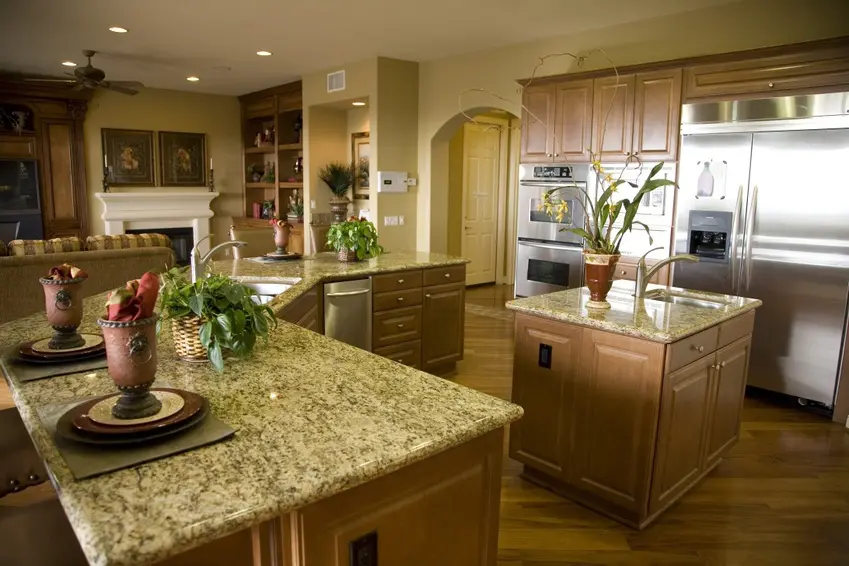
How To Polish Granite Countertops
- Posted on
- FlintstoneCountertops
Granite is one of the toughest materials in the market. Unfortunately, with time, it succumbs to scratches and etching. Dull spots also start showing giving the countertops an ugly appeal.
When this happens, you don’t have to replace the granite countertops. Work with granite experts and polish the countertops and restore the factory shine.
For you to do it effectively you should religiously follow a set of steps that include:
Clean the countertops
You can’t polish the countertops while they are still dirty, so you should start with cleaning them. Mix warm water and mild soap and use it to get rid of any spills and stains. Take caution not to use harsh chemicals on the countertops. Avoid products containing ammonia, bleach, lime, vinegar, lemon, and glass cleaners.
Get the granite polish
You can get the polish in two ways: you can make your own or buy already made polish from your local home improvement and kitchen stores. When purchasing the polish, avoid general-purpose polishing products as they have been proven to damage the countertops.
When it comes to making your polish, there are plenty of recipes you can follow. Regardless of the one you follow, ensure that the polish you make isn’t too acidic.
To make your granite polish, begin with three cups of warm water then add ¼ cup of baking soda.
Apply the solution
If your countertops are dull due to superficial scratches and light etching, you can restore the original countertop shine using granite polishing powder.
Make a paste by mixing the polishing powder with water then apply the polishing solution using a soft cloth. If using retail granite polish, spray it lightly on the countertops and let it sit for 2-3 minutes.
You should then buff the countertops with the polish using small, circular motions. Use a very soft cloth to do it as a more abrasive material will scratch the granite.
Once you are done, wipe off the polish with a damp cloth to get a streak-free finish. It’s normal to have excess water on the countertops after wiping the countertops down. If this happens, use another cloth to dry it off.
In most cases, your granite will polish nicely even when you do it by yourself, but if the countertop is profoundly scratched or damaged, the home remedies might not work. In such a case, contact a home restoration professional to professionally polish the countertops so that they look as good as new.
Professionals use wet or dry polishing techniques together with specialty tools. These tools cause irreversible damage, so you should only ensure professionals use them.
Tips on how to preserve your granite countertops
To reduce the frequency you polish the countertops, you should observe a set of tips that include:
- Clean the spills immediately to prevent marks and stains from coming about. If you leave liquids on the surface for a long time, they cause dark, shadowy marks that give the countertops a cheap, ugly look.
- Buff the countertops with cooking oil. This will make the countertops shiny and stain-resistant. Apply some cooking oil to the cloth and wipe it across the granite countertop surfaces. When doing it, apply gentle pressure. This will give the granite a nice shine, which also reduces the chances of stains coming about.
- Although it’s tough and durable, granite is easily damaged when you cut directly on it. To protect it, always use a cutting board. You also shouldn’t leave any sharp objects lying around.
- Place hot pans, pots, hair straighteners, and curling irons on an insulated mat. This is to protect the surfaces from getting burnt. It also prevents micro-scratches from coming about. According to granite installers Rockville, using an insulated mat also prevents the sealant from eroding quickly.
- To prevent chemical damage, avoid keeping any cosmetics on the countertops. This is because most of the cosmetic products contain chemicals that can tarnish the countertops and break the sealer. Just like with hot products, place the cosmetics on a mat or tray. You can also lock them in a cabinet.
- Keep the countertops sealed to protect the stone from everyday use. For peace of mind, do a bead test once in a while to confirm that the sealer is working optimally. Pour a few water drops on the countertops. If beads form, it shows that the seal is working properly. On the other hand, if the water drops get absorbed by the countertops, you should re-seal the countertops.

